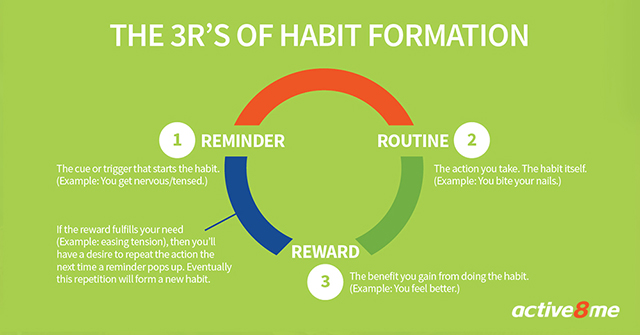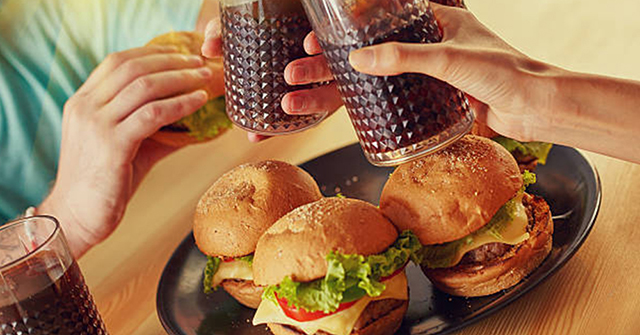We are all creatures of habit. There is no escaping them, but they contain a simple power that can be harnessed for good or evil. It may seem like mission impossible, but if you want that transformed body and lifestyle where you’re fit and toned and feel energized and confident, then your mission (should you choose to accept it) is to acknowledge your good, bad or ugly habits and then read on to know why you have them and, more importantly, HOW to make more good habits and watch the bad habits destruct!
So, what is a habit?
Habits can be positive or negative, useful or harmful, good or bad. They can be your best friend or your worst master. They can make life easier or hinder your healthy progress, as they are repeated behaviours that require little conscious thought, for example brushing your teeth or biting your nails. Obviously, one is a good habit and one is a bad habit – but notice how you do both without much thought.
Dr Chong Yeh Woei, President of the Singapore Medical Association, from the Singapore Specialist Medical Centre, says “Bad habits are formed over a long period of time. The triggers can be obvious or hidden. The biggest health challenge facing Asians today is the rapidly increasing number of diabetics and overweight people, as these peoples’ habit formation of routine-reward has formed a neural circuit that becomes hard to modify.” Knowing how a habit is formed can help you modify the bad habits you have and build new ones.

Every habit you have – good or bad – follows the same 3-step, recurring pattern
1. The Reminder – this is a trigger that initiates your behaviour. For example, you may get a nervous feeling that triggers you wanting to bite your nails or reach for comfort food.
2. The Routine – this is the action you take, that you have done over and over for a long time.
3. The Reward – this is the benefit or outcome you get from the behaviour. It may be biological, like an addiction to smoking; emotional, like eating when you’re upset; or simply the way you cope with stress; like biting your nails.

The thing to note is that habits don’t discriminate – they will form whether they are beneficial or detrimental for you. The reward/ outcome doesn’t necessarily have to be positive for you to repeat the routine. It may have satisfied some urgent or deep need that you were not acknowledging, but like being on auto-pilot, you repeat it the next time the reminder happens. Repeating the same action enough times you engrave a neural pathway, and so it becomes a habit. This is what makes them hard to break. You are dealing with re-wiring neural pathways in your brain.
5 tips to help you break bad habits and form good ones
So, if that’s how habits form, what sort of torture must you endure to break them? Don’t worry, it’s not that drastic. Here are 5 great tips to release you from the shackles of your bad habits so you can form good habits that serve you well.
1. Feed a good habit, starve a bad habit
This is a fitting metaphor, especially for those who emotionally eat or use negative self- talk, as the more you feed these habits, the worse they get. Doing more of what’s good and less of what’s bad for you sounds simple, but Dr Chong explains “you need to understand how your body got to the point of being overweight, why it feels that way and what’s driving you to overeat.” He also notes that often it’s a lack of nutritional education that contributes to bad eating habits. “Education about your nutrition is very important, especially to know what habits to feed and which ones to starve”. You don’t know where to start with better nutrition and exercise?
2. To change a bad habit, start small and make it do-able
Let’s be honest, most attempts to change a bad habit fail miserably. Have you ever considered why? It’s generally because you make it an all-or-nothing scenario that just isn’t sustainable. Dr Chong explains that nutritious eating and regular exercise is an essential part of controlling weight and reducing risk of lifestyle diseases, such as diabetes. “ Fad diets are a disaster because they only ever last a limited time and rely heavily on willpower, which is so hard to come by. I recommend making minor changes to your diet, such as reducing the refined carbs, like white rice and breads with one meal a day to start, keeping in mind the plan to reduce the total amount over time”. Consistency builds habits and these slight changes will add up over time to be your new ‘normal’ behaviour.
3. Change your bad habit environment (rather than your willpower)
If you really want to make change and institute new habits that will serve you better, then you need to actively remove yourself from the situations that promote the bad habit. Dr Chong reminds us that your environment may be largely contributing to why you maintain the current bad habit you have. For example, “if you eat to reduce stress and you gather with friends that only eat junk foods… then you need to either replace your reaction to stress or even better change the environment. Choose other activities with those friends and/or change the environment that causes the stress that leads to the behaviour.” As Dr Chong highlights, it is often easier to change your environment rather than trying to rely only on your will power”.

4. Replace the lost needs that your bad habit served
Remember that habits (both your good and bad ones) are there because they have been practiced over a long time. If you try removing a habit, you would be left without fulfilling the need that your habit served and you’ll find yourself falling back into that bad habit. Be prepared for this and replace a habit with something else that offers you a reward for your routine. For example, you know you want to cut back on your coffee habit, then you need to identify the times when you are most susceptible to reaching for coffee. Is it first thing in the morning? Is it during business meetings? Whatever the occasion, have a replacement prepared, such as a green tea first thing in the morning or some infused water during the meeting.
By being aware of the ‘reminder’ part that triggers you automatically going towards the bad habit, you now have options on hand to quickly fill the ‘routine’ you would normally fall into. So your routine continues but with a different outcome.
5. Use leverage and reward yourself for ditching the bad habit
Dr Chong says “Ultimately, you need to focus on how good you will feel when you change your bad habit. With better nutrition and exercise you will feel lighter, more energetic, more positive, feel good about yourself and look good in your clothes.” By using this focus you can set up strategies to help you leverage what you want. Tell people of your intentions and remain accountable for a set period, so after that time you can reward yourself (with something other than the bad habit you’re trying to break). Many people think that just achieving the goal itself is enough, but rewarding yourself is secondary leverage along the way and helps motivate you on the journey to get there – in this case breaking a bad habit.
A quick review…
1. Habits can be your best friend or worst master. It isn’t easy to change them, but it IS possible. And when you form good habits they can serve you very well.
2. Habits are formed by the cycle of Reminder- Routine- Reward. By knowing this you are empowered to identify your habits (good or bad) and change/ create new ones!
3. 5 Tips to replace bad habits with good ones:
✓ Feed a good habit, starve a bad one
✓ Start small and make it doable
✓ Change your environment
✓ Replace the lost needs your habit served
✓ Use leverage and reward yourself













